Is Travel Reimbursement Taxable? Understanding IRS Rules And Payroll Tax Implications Updated On: September 2025

If you dispose of the vehicle in years 2 through 5 and the half-year convention applies, then the full year’s depreciation amount must be divided by 2. If the mid-quarter convention applies, multiply the full year’s depreciation by the percentage from the following table for the quarter that you disposed of the car. A part year’s depreciation is allowed in the first calendar year, a full year’s depreciation is allowed in each of the next 4 calendar years, and a part year’s depreciation is allowed in the 6th calendar year. The discussion that follows applies to trade-ins of cars in 2024, where the election was made to treat the transaction as a disposition of the old car and the purchase of the new car.
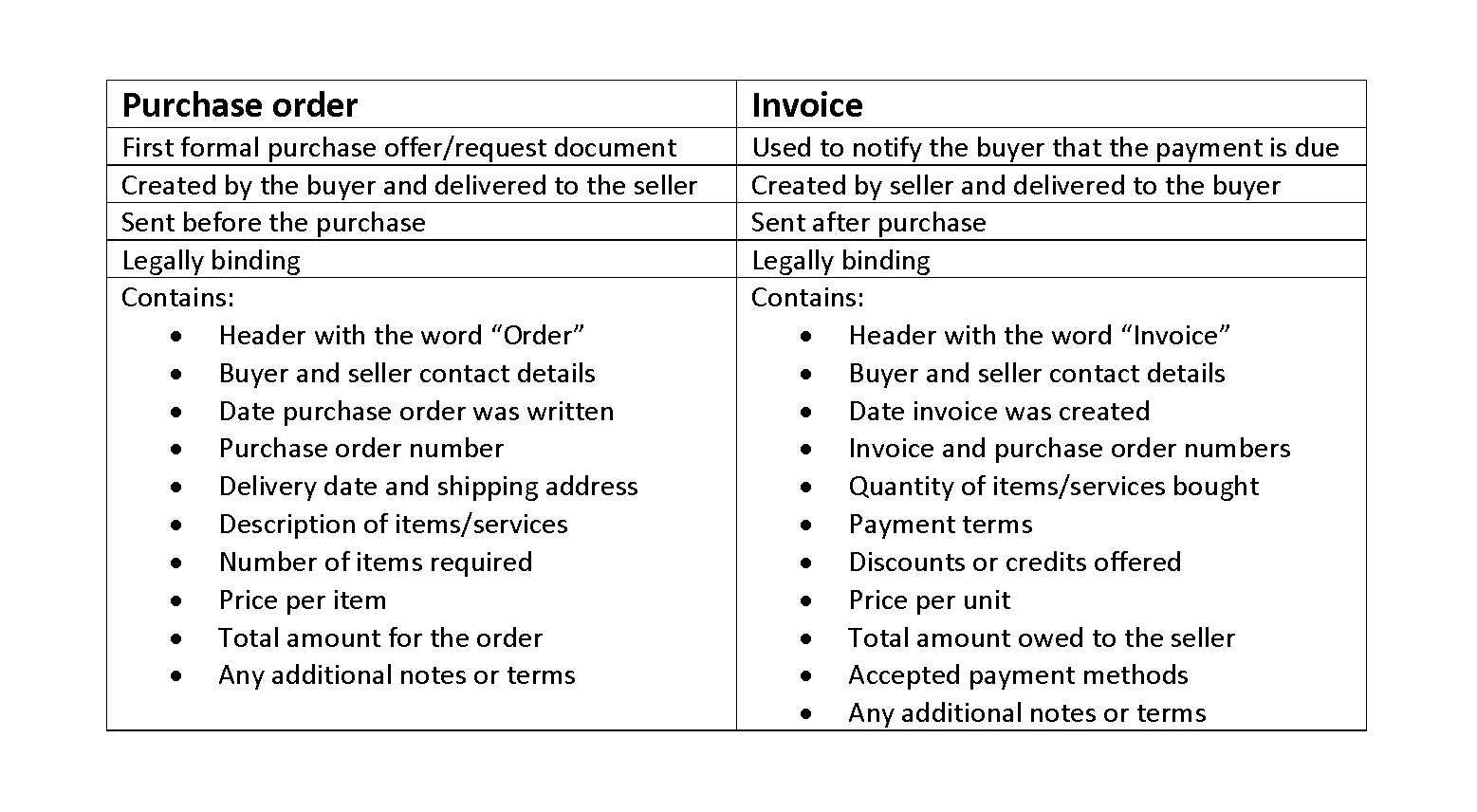
Business travel recovery: Trends shaping the future of travel
Generally, you can’t deduct any expense for an entertainment event. This includes expenses for entertaining guests at nightclubs; at social, athletic, and sporting clubs; at theaters; at sporting events; on yachts; or on hunting, fishing, vacation, and similar trips. The convention agenda or program generally shows the purpose of the convention. You can https://builderhub.au/quick-guide-to-allowance-for-doubtful-accounts-and/ show your attendance at the convention benefits your trade or business by comparing the agenda with the official duties and responsibilities of your position. The agenda doesn’t have to deal specifically with your official duties and responsibilities; it will be enough if the agenda is so related to your position that it shows your attendance was for business purposes. The daily limit on luxury water travel (discussed earlier) doesn’t apply to expenses you have to attend a convention, seminar, or meeting on board a cruise ship.

Actual Cost vs Standard Meal Allowance
On September 4, 2024, you bought and placed in service a used car for travel expense reimbursement $15,000. You used it 60% for your business, and you choose to take a section 179 deduction for the car. The car isn’t qualified property for purposes of the special depreciation allowance. MACRS is the name given to the tax rules for getting back (recovering) through depreciation deductions the cost of property used in a trade or business or to produce income. You trade in a car that has an adjusted basis of $5,000 for a new car.
Are Travel Reimbursements Taxable by the IRS?
- There is no optional standard lodging amount similar to the standard meal allowance.
- You can deduct the cost of your round trip between Baltimore and Pittsburgh.
- It’s a seamless way to manage business travel expenses reimbursement at scale.
- The rate of depreciation that was allowed in the standard mileage rate is shown in the Rate of Depreciation Allowed in Standard Mileage Rate table, later.
- The person who performs services for you is considered the recipient of a fringe benefit provided for those services.
- Staying updated on these rates ensures accurate tracking of mileage expenses and compliance with IRS guidelines.
If you use the high-low substantiation method, when new rates become effective (generally, October 1), you can either continue with the rates you used for the first part of the year or change to the new rates. However, you must continue using the high-low method for the rest of the calendar year (through December 31). If you are an employer, you must use the same rates for all employees reimbursed under the high-low method during that calendar year. For information on how to report expenses on your tax return, see Self-employed at the beginning of this chapter. Your employer gives you $1,000 a month ($12,000 total for the year) for your business expenses.

Treating all reimbursements as tax-free

There is no other business use of the car, but you and your family use the car for personal purposes. You keep adequate records during the first week of each month that show that 75% of the use of the car is for business. Invoices and bills show that your business use continues at the same rate during the later weeks https://www.bookstime.com/articles/departmental-budget of each month.
How Can Employees Keep Their Travel Reimbursements Tax-Exempt?
These records should include information for each business trip, such as the date, destination, purpose, and total mileage driven. It is essential to keep track of both business and personal mileage to determine the percentage of business use for reimbursement purposes. Employers can utilize various tracking methods, such as GPS or mobile apps, to ensure accurate mileage tracking. In April 2018, you bought and placed in service a car you used exclusively in your business. You didn’t claim a section 179 deduction or the special depreciation allowance for the car.
Construction Accounting & The Completed Contract Method CCM
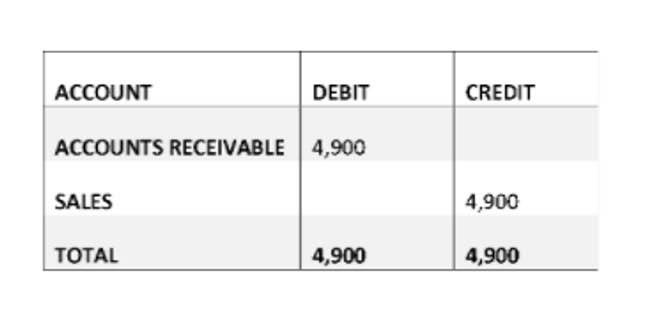
Our ACA reporting & e-filing services include official 1094-C and 1095-C IRS reporting, optional e-filing (no applying for a TCC code required), mailing to your employees and experienced support to help you. Currently, the Form 8697 is a document which does not have an Examination Returns Control System (ERCS) tracking code. Therefore, the time applied to the examination of look-back claims should be charged to Activity Code 575. The Form 8697 case package should be sent to the appropriate campus listed below via Form 3210, Document Transmittal, in order to track the Form 8697. See the Closing Procedures for Look-back Interest Owed later in this document.
Manage Your Business Cash Flow
Whatever industry you are in, your business is required to choose an accounting method to report income and expenses. In construction, the percentage of completion and completed contract methods are often used by contracts since they often work on long-term contracts for large projects. Once you’ve chosen the method, it can’t be changed without special permission from the Internal Revenue Service (IRS). Therefore, it’s crucial to fully understand the chosen method to stay on top of tax compliance. The completed contract method (CCM) is a construction accounting method that’s primarily used for revenue recognition.

CCM in Summary: How RightRev Supports All Reporting Methods
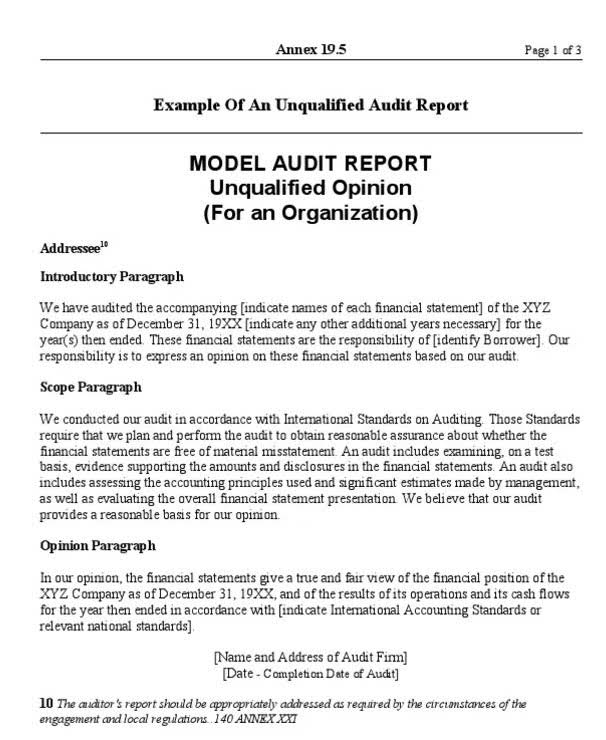
For this reason, any time you need to produce financial statements, you should do it through an accrual GAAP-based format. Along these lines, you can now match revenues to the expenditures that help you generate those revenues, giving you a more accurate picture of the true results of this job. You’ll hear this concept referred to as completed contract method example the “matching principle.” This principle solves the biggest problem from cash basis accounting, which is the misalignment of revenues and expenses. In doing so, it can also help you gain powerful insights into the profitability and financial health of your business. In some cases, using the completed contract method makes sense, especially for projects lasting just a few months with contract amounts typically less than $100,000.
- In the video below, we’ll see how the completed contract method works, how it’s revealed in cash flow reporting, and its underlying LOC requirements.
- To clear the full contract amount from Progress Billings, they’ll perform a debit, then credit revenue.
- In any case, always seek the advice of a financial expert who can give you the advice and guidance you need to make the right decision for your business.
- Successfully implementing the percentage of completion method requires a disciplined approach to project management and financial tracking.
- Table B illustrates the Schedule(s) to be completed for common method changes.
- However, tax laws can be changed from year to year, you can face the risk of increases in tax rates and missing tax incentives.
How to Calculate Revenue Recognition: The Percentage of Completion Method
- Performance obligations are looked at by ASC 606 as opposed to contracts under completed contract accounting.
- Once the seller recovers the total cost of $60,000, any additional cash received is recorded as profit.
- The completed contract method may defer tax liabilities until the completion of a project, which can be advantageous for cash flow management.
- In the signature section, include the signature of one of the general partners or LLC members who has personal knowledge of the facts and who is authorized to sign.
The method recognizes revenue and expenses differently than traditional business models, creating unique balance sheet and income statement patterns that construction businesses must understand for effective financial management. Unlike service businesses that typically record revenue when earned, construction companies using CCM defer revenue until the entire project delivers value to the customer. The completed contract method is an accounting approach that postpones revenue and expense recognition until the contract is completed. Unlike other methods that recognize income as work progresses, CCM treats the entire project as a single unit, deferring all financial reporting impact until the construction project is finished. While most construction companies have migrated toward the percentage of completion method, CCM remains a viable option for certain types of construction contracts and business situations. The percentage of completion accounting method helps to protect companies from fluctuations in Outsource Invoicing their revenue stream by recording revenue at regular intervals.
If a project’s scope and timeline isn’t well-defined, consider if it would actually be a good fit for your business. If you can figure out a job’s potential date of completion, it can make it easier to plan out what you’ll be bidding on next. Let’s say you’re building out a shell for a tenant and they have no idea what they want to build, but they want to go ahead and mobilize you to get started on the basics. Or maybe you’re working on a job that’s experiencing frequent change orders.


This way, you can better extrapolate performance from month to month and from job to job. In short, when you rely on cash basis accounting, you won’t have an accurate way to record profits. This will bring huge fluctuations in results that can make it difficult to accurately job cost. Because you’ll be recording income and expenses in separate accounting periods, making it extremely challenging to understand your true financial position. Finally, the cash basis of accounting isn’t allowed under GAAP or IFRS (more on this in the next section).
For long-term projects the actual postings recorded in FI may not necessarily reflect the current valuation and progress of the project. If revenue is billed in advance of actual job progress, the profit can be overstated for a period. Conversely, if progress has been recorded for a project in advance of Accounting Periods and Methods billing, the profit can be understated for the period.
For an example illustrating how to calculate a section 481(a) adjustment with respect to a method of accounting for which an applicant has waived deductions, see Regulations 1.59A-3(d)(9) (Example 9). The year of change is the first tax year the applicant uses the proposed accounting method, even if no affected items are taken into account for that year. If the filer is a business, enter the 6-digit principal business activity (PBA) code of the filer.
Do credit sales go in the cash book?

The loss incurred when a customer fails to pay their business debts is known as Bad Debt Expense. The business debits the Bad Debt Expense Account and credits the Accounts Receivable account, in this case, to reduce the receivables by the amount of the loss incurred. Entering a sale into the wrong account can skew your financial statements and require cleanup work later. Reduce the risk by using templates, limiting account access, and regularly reviewing entries. Cost of goods sold (COGS) represents the direct costs of producing or purchasing the goods you sell.
Everything You Need To Master Financial Modeling
Credit sales on a balance sheet play a vital role in the financial operations of businesses across various industries. Understanding the definition, importance, and impact of credit sales is crucial for financial professionals and business owners alike. Credit sales refer to transactions where goods or services are sold to customers on the agreement that payment will be made at a later date.
- While there are some risks, you can minimize them with proper preparation, planning and technology – reaping benefits like winning more deals.
- The key components include a debit to either cash or accounts receivable (showing an increase in assets) and a credit to sales revenue (indicating an increase in equity through earned income).
- You should check the legislation applicable to your contract before setting your payment terms.
- Accurate journal entries for credit purchases and sales are essential for maintaining financial transparency, tracking liabilities and receivables, and ensuring compliance with tax regulations.
- One of the most effective strategies is to employ an automated system.
- If the sale is not paid for, the journal entry remains on the customer’s account until it is paid off.
Steps to Record a Sales Revenue Journal Entry

Similar to the credit sales meaning, you recognize this revenue before receiving cash. A company’s financial statements contain a great deal of information, and you may not need all of that information at a given time. You can quickly pick out a specific section of that credit sales are recorded as data, such as annual credit sales, if you know where to find it within the statements.
Which Accounts Are Used in Sales Entry Records?

The cash book is updated from original accounting source documents, and is therefore a book of prime entry and as such, can be classified as a special journal. In instances where goods are returned or allowances are made, the Sales Returns and Allowances account, a contra-revenue account, is used to adjust the sales revenue. SECS reduces financial risks and increases cash flow efficiency with professional strategies and compliance-focused solutions. So you give them a discount of 20% to make up for the inconvenience, making the final sale price $40. This can be a bit confusing if you’re not an accountant, but you can How to Run Payroll for Restaurants use this handy cheat sheet to easily remember how the sale journal entry accounts are affected. Finally, if your state or local governments impose a sales tax, then your entry will show an increase in your sales tax liability.
Journal Entry for the Return:
One is to give to the purchaser of the goods, and the other to maintain the internal records and pass respective entries in the Sales Book. The US CPA syllabus places this under FAR (Financial Accounting and Reporting). Students must understand the impact of credit transactions on revenue recognition, balance sheet classifications, and accounts receivable accounting. It’s also key in the preparation of adjusting entries, closing entries, and audit documentation.
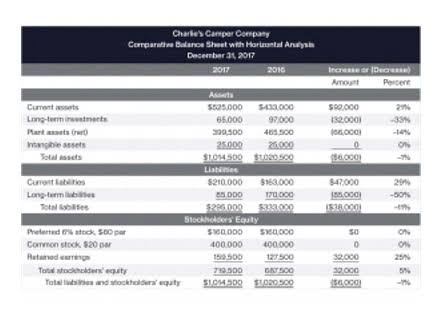
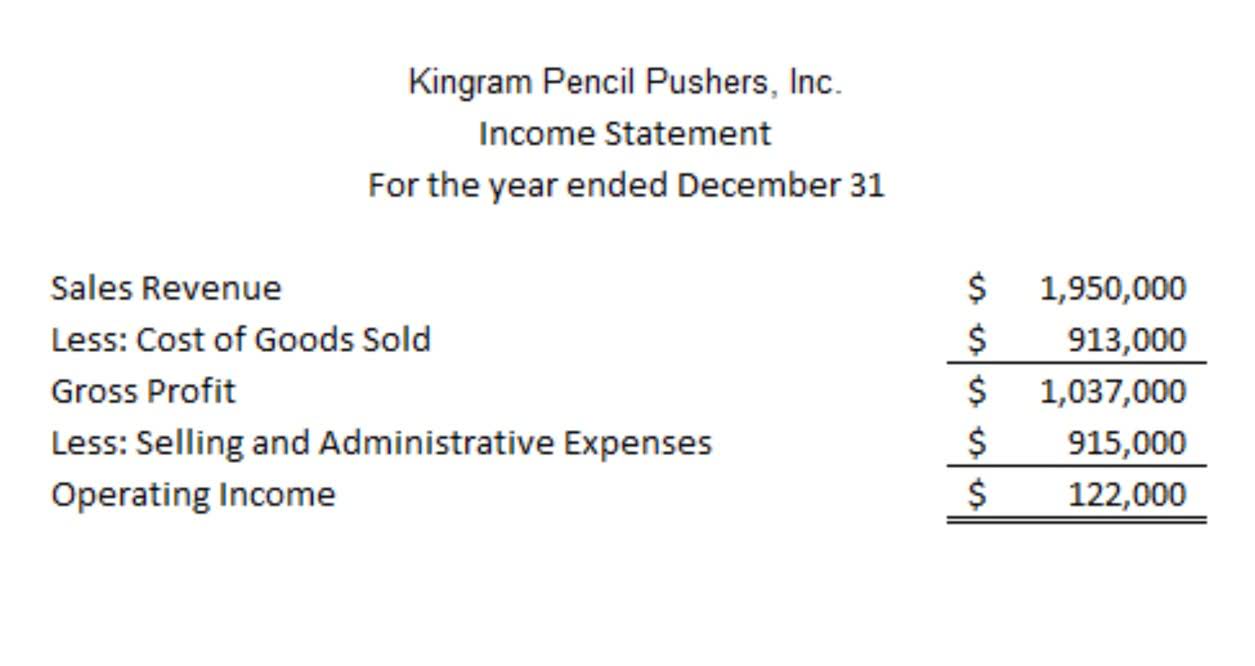
The transactions which are done on credit are not recorded in this book. For example, for goods purchased for cash, Purchases Account is debited and Cash Account is credited. While posting this entry into the ledger, it will be posted both in Purchase Account as well as in Cash Account.
Example of the Sales Journal Entry
Credit sales require substantial internal resources to manage if complications arise. Additionally, credit sales are commonly used for large transactions. When substantial amounts are due for goods or services, it’s often more feasible to facilitate staggered payments rather than requiring the total amount upfront. This approach can make large purchases more accessible and financially manageable for customers. At the end of each accounting period (usually monthly), the sales journal double entry is used to update the general ledger accounts.
Common Mistakes in Recording Credit Sales Journal Entries
While the benchmark for the https://ufazeed-slotth.com/retainer-fee-what-is-it-how-does-it-work-examples/ average collection period will differ by industry, the most often cited figure for cash retrieval is around 30 to 90 days. This pie chart illustrates common accounting errors, including misclassification of accounts, failure to account for payment terms or interest, and not adjusting for returns or allowances. Let’s assume in the above example that Smith cannot make payment by January 30, 2018, as he has gone bankrupt. Now, Walter believes that the outstanding amount is unrecoverable and is bad debt now. Tina records this by crediting the bank account and debiting Dale’s account.
How AI is Automating Expense Management: From Receipt Submission to Reimbursement

It is a way of reducing manual intervention required in the expense management process and increasing its efficiency. Managing expenses efficiently and accurately is crucial for maintaining budget control and ensuring expense management automation financial transparency. Expense management automation solutions have become indispensable tools for businesses of all sizes. Access comprehensive and customizable reports that provide insights into your financial data.

Policy Enforcement
- You no longer have to worry about misplacing receipts, and it’s much easier to sort and review transactions.
- These platforms are designed to sync with accounting tools, HR systems, and corporate cards, bringing all expense data into one centralized hub.
- Yes, these systems typically integrate with accounting, ERP, and payroll software, ensuring seamless data transfer and reducing the need for duplicate data entry.
- Automated expense management systems transform a traditionally tedious process into a simplified workflow.
- For finance leaders, this shift provides near real-time visibility into spending patterns and improves both employee satisfaction and cash flow management.
- An automated expense management solution is designed to deliver a cohesive, end-to-end digital experience, eliminating the drudgery and inherent vulnerabilities of manual processing.
Clyr increases the efficiency and accuracy of your financial operations, reducing manual workload and errors. Experience a streamlined and reliable accounts payable process that supports your business growth. Make expense reporting effortless for your team with Clyr’s multiple submission options. Employees can submit Travel Agency Accounting receipts via SMS or email, allowing quick and convenient reporting. Our software supports any credit or debit card and bank account, providing ease of use and comfort within your existing financial ecosystem. While automating expense management is good for any company, not all expense management systems are created equal.

All Your Work, One Smart Platform
This ensures policy adherence without manual oversight and helps catch issues before they escalate. Learn employee rights, IRS rules, federal rates, and best practices to streamline business travel expenses. Expense management automation simplifies your processes and gives you control over your finances.
Mobile Receipt Management
The best solutions integrate seamlessly with existing accounting and ERP systems while enhancing efficiency with smart automation. Before making any changes, businesses need to pinpoint inefficiencies in their current expense management workflow. Slow approvals, frequent errors, and policy violations signal areas where automation can make a real impact. Smart alerts and approval workflows are triggered when expenses fall outside predefined guidelines, fostering compliance and enhancing financial transparency across teams. This proactive approach reduces the risk of policy violations and fosters a culture of accountability.

Receipts are captured through the mobile app, and transactions are auto-categorized for easy bookkeeping. Divvy’s powerful analytics and budget insights help businesses control costs and eliminate end-of-month surprises, making it a top choice for finance teams https://www.signplace.ca/what-does-balance-mean-definition-examples/ that value agility and visibility. Automated expense management solutions easily connect with accounting platforms, allowing approved expenses to flow directly into the general ledger without manual input.
Cash over and short: Managing Cash Discrepancies in Retail Stores
Auditors examine these reports to understand the frequency and magnitude of discrepancies, which can serve as indicators of the effectiveness of current internal controls. They may also provide recommendations for enhancing procedures to mitigate future occurrences. On the other hand, if the company has a cash shortage in the petty cash fund, it can make the journal entry with the debit of cash over and short account instead. Now cash is debited for $94, the sales account is credited for $95, and cash over and short is debited for $1.
cash short and over
- The cash over and short account is used to record the difference between the expected cash balance and the actual cash balance in the imprest account.
- These variances directly affect the reported cash balance and, consequently, the accuracy of financial statements.
- For a cash overage, the “Cash” account is debited to increase its balance, and the “Cash Over and Short” account is credited.
- Cash discrepancy is a common issue that businesses face when handling cash transactions.
- For example, if a cash drawer should contain $600 but only $595 is found, the drawer is cash short by $5.
The cash overage/shortage account is an expense account in the income statement of the business. Let’s assume Tom rang up a $100 pair of running shoes for $100, but he miscounted the cash received for the shoes. The accounting system will show $100 in sales but $101 of collections.Now subtract the amount remaining from the account’s original balance to determine by how much you need to replenish the account. In the example, if your petty cash account’s original balance was $1,000, subtract $550 from $1,000 to get $450, which is the amount by which you need to replenish the account.
- By automating cash management processes, businesses can save time, reduce costs, and ensure that they have accurate and up-to-date information about their cash flow.
- In the fast-paced world of quick trading and investments, platforms like Pocket Option provide tools to manage and monitor cash effectively.
- By adopting these strategies, businesses can minimize cash shortages and ensure that their cash handling process runs smoothly.
- Cash discrepancies can be a major roadblock for retail stores, causing disruptions in the business and leading to significant losses.
- Moreover, it is important to train employees on proper cash handling procedures.
These seemingly small discrepancies can add up over time, making it essential for retailers to maintain accurate records and employ effective internal controls to minimize cash over short instances. By closely monitoring and analyzing their cash-over-short accounts, firms can identify any potential issues and take corrective measures, ensuring a more transparent financial reporting process. Conversely, when a cash overage is identified, the Cash account is debited, and the Cash Over and Short account is credited. For instance, if cash is over by $3, the entry is a debit to Cash for $3 and a credit to Cash Over and Short for $3. These entries ensure the Cash account accurately reflects physical cash, while the Cash Over and Short account tracks operational variances. When an overage occurs, the excess cash is recorded as a credit to the Cash Over and Short account, increasing income.
How Cash Short and Over is Recorded
These trends might also signal more serious concerns, including potential theft or misappropriation of funds, which warrant further investigation. Managing cash discrepancies in retail stores is a crucial aspect of cash management. It is essential for a business to have an accurate and efficient cash management system in place. https://pedicabs.us/pedicab-manufacturers Cash discrepancies can occur due to various reasons such as theft, human error, or technical issues.
Cash overage in retail business
A cash https://www.crato.org/how-to-choose-the-right-single-bed/ shortage is treated as an expense, representing a reduction in expected cash. Conversely, a cash overage is treated as revenue, signifying an unexpected increase. This classification reflects that the account impacts the period’s income, not assets or liabilities. The balance is usually closed out at the end of each accounting period, transferring its net effect to the company’s income or expense. This account serves as a temporary holding place for differences between expected and actual cash balances. It is classified as an income statement account, reflecting an increase in revenue for an overage or an expense for a shortage.
- These differences, whether over or short, typically involve small amounts from routine operational activities.
- Any errors in this physical count will directly impact the calculation of cash over or short.
- To this float, all recorded cash sales for the period are added, usually derived from a point-of-sale (POS) system or sales receipts.
- This accounting treatment ensures that the actual cash balance aligns with the financial records.
- Cash shortages can be caused by various reasons, such as human error, theft, or miscounting.
This process is similar to how other temporary income statement accounts are handled. This is because once a discrepancy has occurred, it can be difficult to determine what caused it and how to prevent it from happening again in the future. Preventing cash discrepancy requires a multi-faceted approach that involves all aspects of cash handling, from the moment cash enters the business to the point where it is deposited in the bank. As a temporary account, the Cash Short and Over balance does not appear on the balance sheet. A net shortage for the period is reflected as an expense, reducing the business’s net income. This typically appears as a line item under “Other Expenses” on the income statement.
Causes of Cash Discrepancy
This can prevent any collusion among employees and reduce the risk of cash discrepancies. While cash overages may seem like a good thing, they can actually be a sign of poor cash management practices. By following the steps outlined above, retail stores can address cash overages in a way that is fair, transparent, and consistent with company policies and procedures. Transaction errors, such as mistakes in recording sales or returns, or incorrectly voiding transactions, can also lead to discrepancies.
This accounting treatment ensures that the actual cash balance aligns with the financial records. For example, if daily sales were $500, but only $498 was counted, a $2 shortage would be debited to Cash Short/Over and credited to the Cash account. Documenting the discrepancy, investigation steps, and the final adjustment is important for internal control and potential audits. While these adjustments typically have a minor impact on overall financial statements, their accurate recording is important for transparent financial reporting https://favoryta.com/category/travel/ and monitoring cash handling efficiency. After a cash short or over has been identified and investigated, it must be properly recorded in the accounting records to maintain accurate financial statements. Businesses typically use a “Cash Short/Over” income statement account for this purpose.
The Importance of Accurate Cash Handling
Accurate cash management is a critical aspect of managing cash discrepancies in retail stores. It helps businesses to maintain a steady cash flow, prevent financial losses, improve audit compliance, and enhance customer trust. Therefore, businesses should prioritize accurate cash management to ensure their financial stability and growth. Significant or recurring discrepancies warrant investigation to uncover underlying causes.
Bookkeepers Near Me Find a Bookkeeper
We specialize in serving small to mid-sized businesses, providing personalized bookkeeping and accounting support tailored to your unique needs. Our experienced team of accounting professionals takes care of up to 80% of your bookkeeping tasks, freeing up 200+ hours annually for you to invest in what matters most. Locate a bookkeeper or accountant near you that offers tax and accounting services to businesses in your area.
The bookkeeping services provided by Ultimate Bookkeeping are intended to assist in the accurate recording and organization of financial transactions. While every effort is made to ensure the accuracy and completeness of the information, we cannot guarantee that all financial data is free from errors or omissions. Clients are responsible for maintaining their own records and ensuring that all information provided is accurate and up to date. By utilizing our bookkeeping services, clients acknowledge and accept these terms. At Fourlane, we tailor our small business bookkeeping services around your unique business, budget, goals, and processes; and, it’s all done in the software you already use. Our bookkeepers are experts in QuickBooks, Xero, NetSuite, and Acumatica.
YOUR BUSINESS , IS OUR PURPOSE
Keeping your books accurate and updated always matters and figures into your long-term financial stability. Exclusively Serving QuickBooks Online Users.Focused on service-based businesses – no non-profits or retail. Select a bookkeeping plan that fits your needs, and let us handle the rest. Whether it’s a one-time cleanup or ongoing financial management, we’ve got you covered.
Free Course: Understanding Financial Statements
- The company offers bookkeeping, business consulting, business and personal tax, payroll management, translation and immigration services.
- Senior tax accountant Vadym Virchenko is a member of the National Association of Tax Professionals.
- Its founder, Nelson Soler, was a recipient of the US Small Business Administration Award from the State of Wisconsin.
- When working with Fourlane, you’ll deal with an English-speaking team that deeply understands American taxes, economics, and supply chains – and, most importantly, your business.
- Accessing our fractional bookkeepers is an excellent decision for your company and its future growth.
- Outsource your bookkeeping to upgrade and professionalize financial operations.
Find an accountant or bookkeeper who knows your niche, speaks your language, or is close by—whatever works best for you. Answer a few questions about what’s important to your business and we’ll recommend the right fit.
Manage Financial Relationships
- It also handles the income taxes and employer identification numbers of newly minted ventures.
- Please reach out if you don’t see your industry on the list above.
- With a focus on meeting unique business requirements, finding a “bookkeeper near me” has never been easier.
- We specialize in serving small to mid-sized businesses, providing personalized bookkeeping and accounting support tailored to your unique needs.
- Walker Advisory is an excellent financial management partner for any company or nonprofit with an annual budget between $1M and $100M.
- 1-800Accountant is active across 50 states and has amassed more than 100,000 clients.
Its bookkeeping service involves tracking budget expenses and bank balances and managing accounts receivable and payable. Its certified public accountants, Jill and Robert Knapp, also help resolve tax issues, such as IRS audits and delinquent tax returns. Robert and Jill have more than 25 years of collective experience.
Business Valuations
Their ability to manage both the technical QuickBooks issues and our strategic shift bookkeepers near me to an ERP system has been invaluable. The goal is to achieve data visibility that empowers informed business decision-making. Comprehensive project planning process to keep you informed and limit obstacles.
We fix errors, organize your records, and make sure your QuickBooks is ready for you—so you can focus on what matters most. You can count on us to keep your books accurate and organized, ensuring your financials are always in order. Our process starts with an in-depth evaluation and then we organize tailor-made bookkeeping plans that can strategically achieve your business’ goals of compliance and profitability.
1-800Accountant is active across 50 states and has amassed more than 100,000 clients. It has partnerships with the Florida Justice Association, Dun & Bradstreet, and Found Business Banking. Its CPAs perform bookkeeping tasks, including preparing financial statements, filing quarterly sales taxes, and categorizing transactions, using Wave and Quickbooks Online. For over a decade, they have managed the bookkeeping system of sole proprietorships and large-scale corporations.
T-Accounts Tax Service is a family-owned firm that caters to the accounting needs of individuals and businesses in Milwaukee and its surrounding areas. It provides an assortment of services, including bookkeeping by teaching clients how to keep records accurately. The establishment also handles tax-related options such as planning, preparation, and submission. In addition, its team of professionals offers company forecasts.
It also provides small business start-up advisory services and general office organization. Priscilla A. Prado, the company’s owner and president, has been in the accounting industry for over two decades. Midwest Bookkeeping is a member of the Latino Chamber of Commerce. Dura Services, located in Greenfield, aims to provide high-quality accounting services. The company offers bookkeeping, business consulting, business and personal tax, payroll management, translation and immigration services. Dura Services takes great pride in having a professional team that delivers quality craftsmanship.
Finding reliable bookkeeping services near you shouldn’t mean settling for whoever’s closest. With RemoteBooksOnline, you get expert, CPA-ready bookkeeping tailored to your business — delivered remotely by certified professionals, regardless of your ZIP code or city. Instead of spending weeks hunting for the right bookkeeper, your time is better spent growing your business. Our free matching service connects you with qualified bookkeeping professionals who understand your industry and business requirements. Our nationwide network of vetted bookkeeping professionals assists with everything from startup financial foundations to enterprise-level reporting.
Professional Bookkeepers Near Me
We had a short deadline and Fourlane in to make sure we were able to meet it, as well as to patiently explain the process. Understand the systems and current processes to discover root issue. Have an expert in your corner to help you make strategic business decisions like hiring, equipment upgrades, and spending reduction. I’m a QuickBooks Certified Proadvisor, and I work from home to help support my husband and four kids. Whether you’re in Miami, Dallas, or Seattle—our Virtual Bookkeeping Services Near Me guide shows how remote teams deliver local-quality results. Trusted by thousands of businesses — see what our customers say.
It offers input and planning assistance to ensure accounting and financial systems are meeting the needs of the business. It also assists with accounting software selection and implementation, IRS representation, tax preparation and planning, and business consulting. RDK Tax & Accounting serves individuals and businesses in Milwaukee. The accounting firm’s services include tax planning and preparation, payroll processing, bookkeeping, and sales tax filing.
Average Net Receivables Definition
However, it could also suggest potential inefficiencies in the collection process, overly lenient credit policies, or deteriorating customer payment behavior. Businesses often compare their average net accounts receivable to industry benchmarks to assess their performance relative to peers. This comparison helps identify whether the company’s collection efficiency is within an acceptable range for its sector. Net Receivables SignificanceUnderstanding net receivables is essential for investors as it provides insights into a company’s ability to collect cash and its overall financial health. Additionally, net receivables can help investors assess the impact of changes to credit policies, such as tightening credit terms or implementing new collection procedures. In summary, net receivables offer businesses valuable insights into their collections process, providing a more accurate estimation of cash inflows compared to relying on total AR alone.
How to Calculate Average Net Accounts Receivable
The accounts receivable turnover ratio (also called the “receivable turnover” or “debtors turnover” ratio) is an efficiency ratio used in financial statement analysis. It demonstrates how quickly and effectively a company can convert AR into cash within a certain accounting period. By regularly calculating your average net receivables using this formula, you can track trends over time and make informed decisions about credit policies and collection strategies.
In contrast, business-to-consumer (B2C) sales, like retail, tend to have lower averages because transactions are often settled immediately or with very short credit terms. Customer type and payment habits significantly impact how quickly invoices are collected, directly influencing the average. A guide explaining the Accounts Receivable Turnover Ratio meaning, how to calculate it, and its limitations.
Calculate Net Accounts Receivable
Net credit sales refers to how much revenue a company earns, specifically revenue paid as credit. The sale must incur an accounts receivable balance in order to be considered a “net credit sale,” meaning cash sales aren’t included. Certain industries, like business-to-business (B2B) transactions, often have longer payment cycles and higher average accounts receivable due to large-volume or complex sales.
Placement in Financial Statements
- Tools like Synder can automate this process, making your financial management effortless.
- Industries with long sales cycles or large project-based work, such as construction or manufacturing, may naturally have higher average receivables due to extended payment terms.
- It serves as a baseline against which current performance can be compared or trended over different accounting periods.
If the turnover is decreasing and days outstanding increasing, this indicates collection periods are lengthening. Let’s face it, accounts receivable management can be such a drag when trying to pursue it manually across average net receivables several platforms. That’s where Synder comes in, helping automate and simplify your accounts receivable processes. Because all future receipts of cash, as well as defaults, are not known, net receivables represent an estimated amount. Management thus has the potential to manipulate the value of net receivables by adjusting the allowance for doubtful accounts. This bodes very well for the cash flow and personal goals in the small doctor’s office.
Use of the Receivables Turnover Ratio
- NAR helps you project how much cash is coming in and out, when you’ll have it on hand to pay wages, rent, and inventory – and other obligations.
- Note that it is customary practice in the accounts receivable turnover calculation to use 365 days instead of 360 days (as used in banking for commercial loans interest).
- The accounts receivable turnover ratio is generally calculated at the end of the year but can also apply to monthly and quarterly equations and predictions.
- To minimize potential manipulation and uncertainties surrounding net receivables, it is vital for investors to analyze multiple financial statements spanning various economic conditions.
Net sales is the amount after sales returns, discounts, and sales allowances are subtracted from gross sales. Procurement can be a complex and multifaceted process, involving various steps from identifying suppliers to negotiating contracts. It’s no wonder that businesses are always on the lookout for ways to simplify this critical aspect of their operations. One tool that can help streamline procurement is the Average Net Receivables formula. For instance, if a company expects $10,000 in returns and $5,000 in allowances, these amounts are deducted alongside the doubtful accounts.
Using the example above, net receivables would equal $460,000 ($500,000 – $25,000 – $10,000 – $5,000). Specific Identification MethodIn this method, individual receivables are identified as uncollectible based on specific evidence or circumstances. Companies may write off a receivable if, for example, a customer files for bankruptcy protection or dies. While this approach can provide the most accurate estimation, it requires significant effort and resources to implement effectively.
While this leads to greater control over cash flow, it has the potential to alienate customers who require longer payback periods. To calculate the receivables turnover ratio, a company needs to divide its net credit sales by its average accounts receivable. This ratio is usually calculated on a monthly, quarterly, or annual basis, and it can be used to help companies measure current cash flow trends and identify opportunities for improvement. The allowance for doubtful accounts is an estimated amount of receivables that a company anticipates will not be collected from customers. This contra-asset account reduces the gross accounts receivable balance to arrive at a more realistic valuation.
Allowance for Doubtful Accounts
Companies can benchmark their accounts receivable turnover by comparing it to their industry average. It’s not unusual for businesses to give clients 30 days or longer to pay for a product or service. That’s the time during which the business could be reinvesting in itself, paying down debts, or otherwise addressing its own financial obligations. Net Accounts Receivable refers to the amount of money a business expects to collect from its customers after adjusting for allowances such as doubtful debts and sales returns. For example, if accounts receivable spiked mid-year due to a temporary system issue slowing collections, the balances around that blip may skew the average higher. Accounts receivable is reported on a gross basis, meaning it includes the full amounts owed without deducting uncollectible accounts.
It is a key metric used to assess the efficiency of a company’s credit and collection policies. Think of it as a realistic view of what your accounts receivable figure will actually turn into in cash once all customer payments are processed. A debtor’s turnover ratio demonstrates how effective a company’s collections process is and what needs to be done to collect further on late payments.
Thus, invoices do not reach customers immediately, as the team focuses more on providing the service. The following is a step-by-step guide to getting those numbers and a final AR turnover ratio. IDC MarketScape vendor analysis model is designed to provide an overview of the competitive fitness of technology and suppliers in a given market. The Capabilities score measures supplier product, go-to-market and business execution in the short-term.
Learn to effectively analyze and utilize average net accounts receivable for strategic insights. Understanding net receivables is important for stakeholders who depend on accurate financial data to make decisions. This figure influences internal management practices and affects external perceptions of a company’s stability.
Understanding these outstanding payments helps assess a company’s financial health and operational efficiency. The average accounts receivable serves as a key metric derived from this balance, offering insights into a company’s liquidity and credit management practices. This calculation provides a normalized view of the typical amount of money tied up in credit sales over a specific period. For example, the Accounts Receivable Turnover Ratio divides net credit sales by the average net accounts receivable to measure how many times a company collects its average receivables during a period. Days Sales Outstanding (DSO) calculates the average number of days it takes for a company to collect payment after a sale, often using the average accounts receivable in its formula. These related ratios offer a comprehensive understanding of a company’s liquidity and the effectiveness of its credit and collection management.
This situation means that the company is converting its sales into cash quickly, which generally supports stronger liquidity. However, overly strict credit terms could deter some customers, leading to missed sales opportunities. “Beginning accounts receivable” refers to the total amount of money owed to the company at the start of the chosen accounting period.
The concept behind an aging schedule is to apply different collectibility rates to different receivables based on age. Strengthen your AP process with better management strategies—download the AP Survival Guide. It involves sourcing goods or services from external suppliers to meet operational needs efficiently. However, managing procurement can be challenging without proper monitoring of accounts receivable. Next, you’ll need to select a time frame for calculation, such as a month or quarter.

